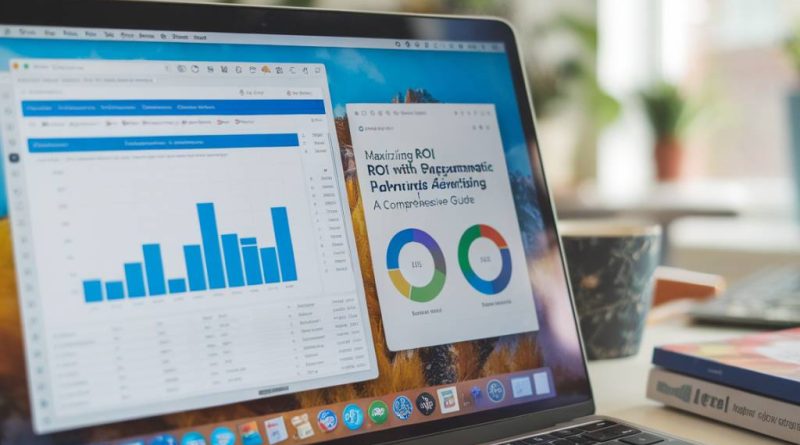Understanding Programmatic Advertising
Programmatic advertising has revolutionized the digital marketing landscape. It leverages automated software to purchase digital advertising, reducing the need for traditional human negotiations and manual orders. Its merits lie in its efficiency and precision, allowing marketers to reach targeted audiences in real-time. But how can businesses maximize their Return on Investment (ROI) with programmatic advertising? This comprehensive guide will explore key strategies and best practices.
Benefits of Programmatic Advertising
Programmatic advertising brings multiple benefits to the table:
- Efficiency: Automates the ad buying process, saving time and resources.
- Precision Targeting: Utilizes data to reach specific demographics and behaviors.
- Real-Time Adjustments: Allows for instant tweaking of campaigns based on performance data.
- Scalability: Can easily scale up or down according to budget and goals.
- Transparency: Offers clear insights into where ads are displayed and how they are performing.
Key Strategies for Maximizing ROI with Programmatic Advertising
Deploying Data-Driven Targeting
The cornerstone of successful programmatic advertising is data. By leveraging first-party, second-party, and third-party data, businesses can create highly targeted ad campaigns. Utilize Customer Data Platforms (CDPs) and Data Management Platforms (DMPs) to collect and analyze vast amounts of data, ensuring that your ads reach the most relevant audiences.
Utilizing Dynamic Creative Optimization (DCO)
Dynamic Creative Optimization (DCO) takes personalization to the next level by automatically tailoring ad creatives based on real-time data. By adjusting elements like images, text, and calls-to-action, DCO ensures that the right message is delivered to the right person at the right time, thereby enhancing engagement and boosting ROI.
Emphasizing Cross-Device Targeting
In today’s multi-device world, it’s vital to ensure that your ads can follow users across devices. Programmatic platforms offer the ability to track user behavior and dynamically serve ads whether the user is on a mobile device, desktop, or tablet. This seamless experience can significantly improve conversion rates.
Effective Budget Management
Starting with a Clear Budget Plan
A well-structured budget plan is key to maximizing ROI. Determine your overall ad spend and allocate it strategically across different platforms and channels based on historical performance and business goals. Always set aside a portion of the budget for testing and optimization.
Implementing Bidding Strategies
Programmatic advertising offers various bidding strategies like Cost Per Mille (CPM), Cost Per Click (CPC), and Cost Per Acquisition (CPA). Choose a bidding strategy that aligns with your campaign objectives. For example, if your goal is brand awareness, CPM might be more suitable, whereas CPA can be effective for driving conversions.
Utilizing Real-Time Bidding (RTB)
Real-Time Bidding (RTB) is a key feature of programmatic advertising that allows advertisers to participate in instantaneous auctions to secure ad space. This ensures that ads are only displayed to the most relevant audiences, thereby maximizing ROI. RTB also provides a wealth of data for real-time optimization.
Measuring and Analyzing Performance
Setting Clear KPIs
Identify Key Performance Indicators (KPIs) that align with your business goals. Common KPIs for programmatic advertising include click-through rates (CTR), conversion rates, cost-per-conversion, and return on ad spend (ROAS). Clear KPIs provide a benchmark for measuring success and adjustments.
Conducting A/B Testing
A/B testing, or split testing, is an invaluable tool for optimizing programmatic campaigns. Test different ad creatives, targeting options, and bidding strategies to identify what works best. Continuously monitor and analyze performance data to make informed decisions and improve ROI.
Leveraging Advanced Analytics
Many programmatic platforms come with robust analytics tools that offer deep insights into campaign performance. Leverage these tools to analyze not just the surface metrics but also underlying trends and patterns. Use insights to refine targeting, creative, and budgeting strategies.
Best Practices for Programmatic Advertising
Maintaining Brand Safety
Brand safety is paramount. Utilize whitelists and blacklists to ensure that your ads only appear on reputable websites. Additionally, employ verification services to monitor where your ads are appearing and to avoid placements next to inappropriate or harmful content.
Ensuring Viewability
Your ads need to be seen to be effective. Utilize metrics like viewable impression rates to ensure that your ads are in positions where they are likely to be visible to users. This not only maximizes the potential for engagement but also ensures better ROI.
Fostering Transparent Partnerships
Work with reputable programmatic vendors who offer transparency in their operations. Understanding where your ad dollars are going and how they are being spent can help you make more informed decisions and build more effective campaigns.
Continuous Learning and Adaptation
Programmatic advertising is an ever-evolving landscape. Keep up-to-date with the latest trends, technologies, and best practices. Regularly attend industry conferences, webinars, and workshops to stay ahead of the curve. Adaptation and continuous learning are crucial for long-term success.
By following these strategies and best practices, businesses can unlock the full potential of programmatic advertising, resulting in improved ROI and greater overall success in their digital marketing efforts.




